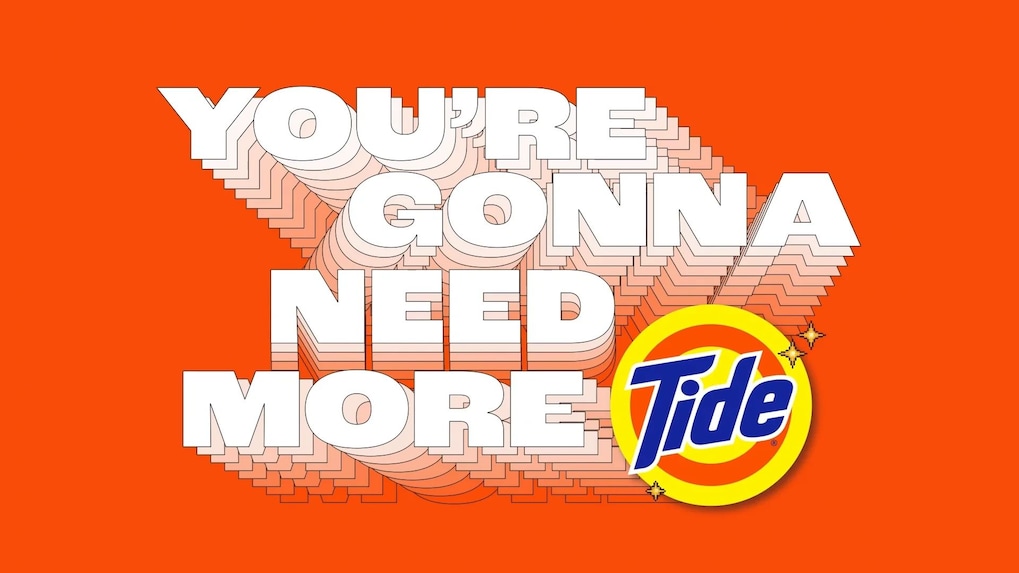In today’s media world, our way of watching Television is changing a lot. People are now accessing their favorite Television shows in two primary methods. Firstly, through traditional cable or satellite (MVPDs), and secondly, through streaming services (vMVPDs). These services are different in how they work and how they advertise. Before the streaming services, cable television ads were the main way to reach a larger audience than Radio and Prints. Companies used to select television channels, shows and time slots for their ads. Now the landscape has changed. This article will explain the differences and similarities between MVPD and vMVPD, how they market to people. Understanding these differences can help advertisers reach their audiences better in this changing Television landscape.
Let’s have a look at all the things you need to know about MVPD and vMVPD to understand their differences and similarities in marketing:
- What is MVPD and vMVPD?
- What are the differences in marketing strategies?
- What are the similarities in marketing approaches?
- A side-by-side comparison
- Which one is right for your marketing needs?
- Conclusion
What is MVPD and vMVPD?
MVPD: Traditional Television Distribution
MVPD stands for Multichannel Video Programming Distributor, also known as cable or satellite television providers. The type of traditional Linear Tv we grew up with is the perfect example. This has been the cornerstone of tv distribution for decades. Companies like Dish TV, DirectTV, Comcast, Xfinity etc. send TV shows to subscribers using old-fashioned methods like coaxial cables, satellite dishes, or fiber-optic cables. MVPD companies create packages that include a variety of channels and sell to the customers. They have multiple packages ranging from basic local stations to premium networks like HBO and ESPN for different prices. Subscribers pay a monthly fee for access to these channels, often with additional charges for premium content or services.

vMVPDs: Digital Streaming Alternatives
vMVPD as in Virtual Multichannel Video Programming Distributor, is a relatively new addition into the television distribution market. Also referred to as over-the-top (OTT) streaming services, which means it delivers TV channels through existing internet connection without a traditional TV set-up like Set-top box or satellite dish. vMVPD has contents from broadcast TV channels including Hulu + Live TV, YouTube TV, and Sling TV etc.
These services offer live and on-demand access to contents like film or a tv show. With this service you can download the app and stream on various devices such as tablets, smartphones, smart TVs, and streaming media players. Programming guides and unlimited DVR (Digital Video Recorder) is also available. The users of this service are increasing rapidly. Like MVPD, Subscribers need to pay a monthly subscription fee for access to a basic package of channels, with options to add premium channels or features for an additional cost.

What are the Differences in Marketing Strategies?
Target Audience
MVPD targets older consumers who like reliable channels and package deals with lots of channels in one package. They understand that these consumers might not be great with new technology, so they keep things simple and easy to understand in their ads.
And vMVPD targets younger consumers who want TV to be flexible, affordable, and easy. These consumers are looking for more modern alternatives than traditional cable or satellite services. vMVPD focuses their marketing efforts on features such as cloud DVR, which allows users to record their favorite shows and access them from any device with an internet connection. They consumers don’t have to subscribe to multiple channels. They can access their contents on demand in multiple devices. Basically, they’re saying, “TV should be easy and fun, not complicated and expensive!”
Overall, vMVPD positions themselves as the future of television, offering a more customizable and user-friendly alternative to traditional MVPD.
Platform and Channels
MVPD and vMVPD have a big difference in their way of reaching customers. They advertise on TV, magazines or newspapers. They also team up with the digital media to offer special deals. The main goal is to catch the attention of customers who are familiar with their brands.
vMVPD focuses on social media and streaming platforms like YouTube for their marketing because they know that their target audience spends a lot of time online. Ads pops up while scrolling through feeds or watching videos. And to increase audiences, they often offer free trials or discounts to get people to give their service a try.
Pricing and Packaging
MVPD gives customer options with different pricing plans that offer various channels and features. This way, people can pick the package that suits them best. They also often have deals like discounted rates for the first year or bundle discounts if you sign up for more than one service, like internet, TV, and phone.
vMVPD takes a different approach by keeping their pricing simple and clear. They offer one main package with a set monthly fee and give customers the choice to add premium channels or extra features if they want. This straightforward pricing is a key part of their marketing, appealing to people who are tired of hidden fees or confusing bills from traditional cable or satellite companies.
Local Channels
MVPD usually provides access to local broadcast channels, such as ABC, NBC, CBS, and FOX, based on the subscriber’s geographic location. And vMVPD may not always offer the same level of local channel availability, as licensing agreements vary by market.
What are the Similarities in Marketing Approaches?
Despite their differences, MVPD and vMVPD share some similarities in their marketing approaches, particularly in their focus on customer experience and value proposition.
Customer Experience
Both MVPD and vMVPD Content heavily invest in content promotion and strategic partnerships to enhance their offerings and attract subscribers. They collaborate with networks, studios, and content creators to secure exclusive programming or licensing deals, which they then prominently feature in their marketing campaigns. By highlighting popular shows, sports events, and movies, both types of providers aim to differentiate their service and appeal to diverse audience interests.
Value Proposition
Traditional cable and satellite providers (MVPD) promote their wide range of channels, special content deals, and dependable service as reasons to pick them over rivals. Meanwhile, virtual MVPD (vMVPD) focuses on their flexibility, affordability, and convenience, especially for users on the move, to stand out in the competitive streaming landscape.
Data-driven Marketing and Optimization
Both MVPD and vMVPD leverage data-driven marketing and optimization techniques to enhance campaign performance and ROI. They analyze customer data, performance metrics, and market trends to identify opportunities for improvement and refine their marketing strategies accordingly. By conducting A/B testing, segmenting audiences, and measuring attribution, both types of providers can optimize their advertising spend, increase conversion rates, and drive incremental revenue growth.
Cross Promotion and Bundling
Both old-school cable providers and streaming services often join forces to offer package deals, aiming to give customers added value. Cable companies might bundle TV with internet and phone services, throwing in discounts to entice customers to sign up for the whole shebang. Likewise, streaming platforms might team up with internet providers or device manufacturers to offer special promotions or even exclusive content. It’s all about keeping customers happy and sticking around for the long haul.
A Side-by-Side Comparison
| Features | MVPD | vMVPD |
| Delivery Method | CableSatelliteFiber Optic | Internet-based |
| Hardware Requirement | Set-top box or satellite dish | Internet-connected device (e.g., streaming player, smart TV, smartphone) |
| Contract | Typically requires a contract | Usually month-to-month or no contract |
| Channels | Traditional TV channels | Selection of live TV channels, often with add-on options |
| On Demand Content | Limited on-demand options | Extensive on-demand |
| Accessibility | Regional availability | Nationwide Coverage |
| Cost | Can be higher due to equipment and contracts | Generally cheaper, with various pricing tiers |
| Installation | Technician installation required | Self-installation or app download |
| Flexibility | Limited flexibility in channel packages | More customizable channel packages and add-ons |
| Marketing Methods | TV channel commercials Sponsor TV programs or events Feature products in TV shows or movies. | In-stream video ads Sponsor streaming events or content Integrate products into streaming content |
Which one is right for your marketing needs?
When deciding between MVPDs and vMVPDs, marketers must consider several factors tailored to their campaign goals and target audience. MVPDs, with their traditional linear TV broadcasts, offer broad reach and are favored by larger conglomerates for extensive awareness campaigns. However, their limited tracking capabilities and higher costs may pose challenges, making them less accessible for smaller businesses. Conversely, vMVPDs provide a more flexible and cost-effective alternative, especially suitable for start-ups and local businesses seeking targeted advertising options. With advanced targeting, tracking, and optimization tools, vMVPDs enable advertisers to reach specific demographics, track ad performance in real-time, and optimize campaigns for maximum impact. Ultimately, marketers should weigh the pros and cons of each model to align with their campaign objectives and audience preferences, ensuring effective allocation of resources and optimal return on investment.
Conclusion
In conclusion, while MVPD and vMVPD both offer access to television programming and might seem similar, they differ in their delivery methods, target audience, marketing strategies, and pricing models. MVPD is traditional distribution channels and targets older customers with bundled package deals, while vMVPD leverages modern streaming technology to attract younger, more tech-savvy consumers with flexible pricing and no long-term contracts. Despite these differences, both types of providers share common goals of delivering a good customer experience and sharing their value to subscribers. By understanding the differences and similarities between MVPD and vMVPD, marketers can create their strategies to effectively reach and engage with their target audience.






Leave a Reply